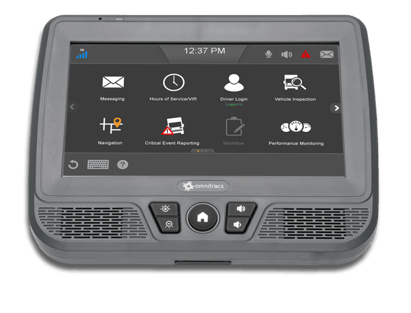REDWOOD LOGIN
Redwood PortalLTL
SCS
SCS Support
Rockfarm
What is an ELD? An ELD is an Electronic Logging Device. What does it do? It is a device used to automatically collect a driver’s Hours of Service data. Recently there was a new ELD mandate passed for the United States that is set to take effect December 18th, 2017. Canada is also in the process of completing their own ELD mandate. The Canadian Mandate has been a long time coming to a country that has been developing it for 6 years. These mandates are being created to increase safety in trucking, and standardize the processes of delivering data to prevent errors, tampering and driver harassment. They are also being created because the two countries share a border and a lot of trucking and trade cross that border. In this article we will take a look at the differences between the Canadian and United States ELD Mandate.
 The Canadian mandate will take most of the provisions that come from the United States mandate which goes into effect next month. This will help to keep things simple for truckers that regularly delivery between the two countries, as well as helping carriers that handle shipments throughout North America stay in compliance with the mandates.
The Canadian mandate will take most of the provisions that come from the United States mandate which goes into effect next month. This will help to keep things simple for truckers that regularly delivery between the two countries, as well as helping carriers that handle shipments throughout North America stay in compliance with the mandates.
However, the Canadian mandate will differ from its United States counterpart in a few ways. Some of the places that the Canadian mandate differs from the United States mandate are in Personal Conveyance, Data Transfer and Enforcement, and Location and Identity Data Sources. Let’s take a look at each.
One of the biggest differences between the United States mandate and the Canadian mandate is the limit of personal conveyance time or distance. The United States puts no limit on the amount of time or distance for personal conveyance whereas the Canadian mandate will put a limit of 75 kilometers in 24 hours. If the driver exceeds this limit, then the ELD system should be changed from ‘personal conveyance’ to ‘driving’.
The United States mandate does not have any requirements for the ELD to measure rule sets. The Canadian mandate will have the requirement that an ELD solution can measure and comprehend a Cycle 1, 2 and above the 60th parallel rules. This will put ELD vendors on notice to make changes to their products so that data can be sent to Canadian enforcement.
The United States mandate also requires carriers to send enforcement highly detailed files and reports of eight-day log data. The Canadian Mandate will not require carriers to do this, but instead, they will be required to transfer or share the 14-day log data in PDF form. The files will be smaller and non-editable. Canadian fleets will still need the ELD display screen with all details for enforcement.
 The United States mandate requires suppliers to get a location for several “events” during shipping, such as duty status, yard moves, personal conveyance, and unassigned vehicles moves. The Federal Government notes that manufacturers of ELDs use the Geographic Names Information System (GNIS) of all the data-based locations and identities in the United States.
The United States mandate requires suppliers to get a location for several “events” during shipping, such as duty status, yard moves, personal conveyance, and unassigned vehicles moves. The Federal Government notes that manufacturers of ELDs use the Geographic Names Information System (GNIS) of all the data-based locations and identities in the United States.
However, the Canadian mandate will require that the government supply vendors with the final file to get distance and direction. This will mean that Canadian suppliers will need to provide the location file to import products to capture locations. This will mean less work for the vendor. Because the Canadian ELD mandate is so similar to the version in the United States, ELD vendors will have already added the locations for the required “events”.
A few things that will stay the same are the Hours of Service regulations. How drive time is recorded and reported will not be affected by the mandate.
Although the mandate takes effect this December for the United States, the Canadian mandate should come down the pipeline soon. These mandates will not change Hours of Service regulations, just the way HOS are recorded and collected. The addition of these two mandates will serve to make Hours of Service data collection standardized, make collection easy, and help with enforcement. Both are a step forward to a safer, more efficient trucking industry.